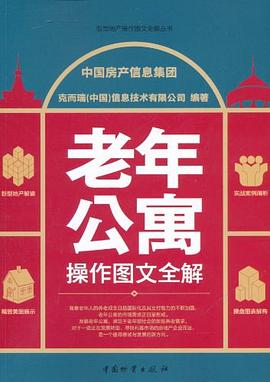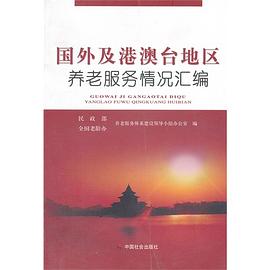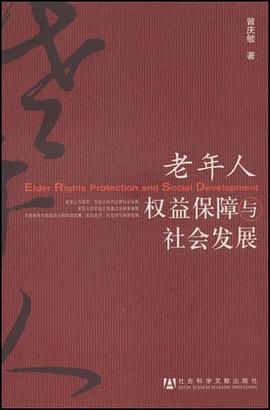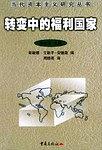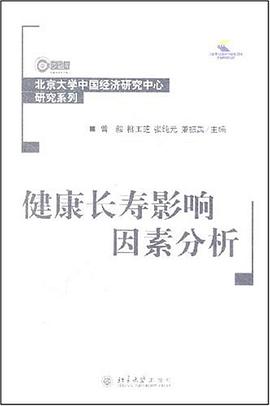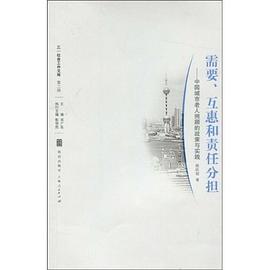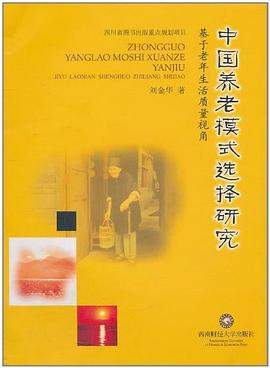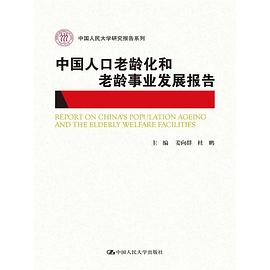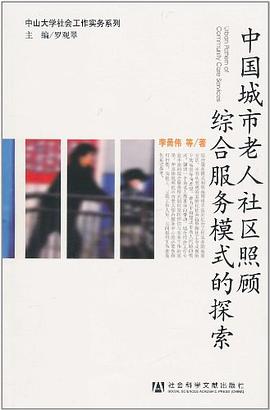
具体描述
《中国城市老人社区照顾综合服务模式的探索》从宏观的老龄化社会趋势到社工专业视角下需求导向为本的基础认知着眼,落实于城市老人照顾的探索与建构。强调一个由老人需求导向带动、结合社会工作专业手法的综合服务模式如何发挥评估与实务工作的效果,并具体说明社区内老人综合服务中心的必要性和可行性,为社工、民政工作人员、民间组织工作者提供了重要参考。
作者简介
李昺伟,中山大学社会学与人类学学院副教授,中山大学社会工作教育与研究中心高级研究员。
目录信息
目 录
第一章 世界人口老龄化趋势…………………………………………………………………1
第一节 老年人与人口老龄化……………………………………………………………1
第二节 世界人口老龄化的历程、现状和趋势…………………………………………6
第三节 世界对人口老龄化的认识和回应………………………………………………11
结 语………………………………………………………………………………………17
思考题………………………………………………………………………………………17
第二章 中国人口老龄化趋势…………………………………………………………………19
第一节 中国人口老龄化的历程…………………………………………………………20
第二节 中国老年人口的现状……………………………………………………………24
第三节 中国人口老龄化的发展趋势……………………………………………………35
结 语………………………………………………………………………………………42
思考题………………………………………………………………………………………42
第三章 老年人需求的基本概念与含义………………………………………………………43
第一节 需求与老年人的照顾支援………………………………………………………43
第二节 需求的认识和评估………………………………………………………………45
第三节 老年人需求的类型………………………………………………………………51
结 语………………………………………………………………………………………54
思考题………………………………………………………………………………………55
第四章 对中国老年人需求的认识……………………………………………………………56
第一节 经济需求…………………………………………………………………………56
第二节 健康需求…………………………………………………………………………61
第三节 精神需求…………………………………………………………………………72
第四节 老年人的照料需求………………………………………………………………76
结 语………………………………………………………………………………………82
思考题………………………………………………………………………………………83
第五章 中国城市老年社会保障………………………………………………………………84
第一节 城市老年社会保障的现行政策…………………………………………………84
第二节 城市老年社会保障现行政策体系的总体特征…………………………………97
第三节 对城市老年社会保障现行政策体系的反思……………………………………102
结 语………………………………………………………………………………………104
思考题………………………………………………………………………………………105
第六章 中国城市老年社会服务………………………………………………………………106
第一节 老年社会照顾体系………………………………………………………………106
第二节 中国老年养老方式的转变………………………………………………………114
第三节 中国城市社区老年社会服务……………………………………………………122
结 语………………………………………………………………………………………132
思考题………………………………………………………………………………………132
第七章 以社区为本的社会支持网络理念概述………………………………………………134
第一节 社会支持网络的含义……………………………………………………………135
第二节 以社会网络分析为指导的社工介入……………………………………………142
结 语………………………………………………………………………………………143
思考题………………………………………………………………………………………144
第八章 中国社区照顾支持网络的需求分析——以广州市A区试点为例 …………………145
第一节 广州市A区老人社区支援服务需求调查背景 …………………………………145
第二节 调查显示老人社区照顾资源……………………………………………………147
第三节 老人的健康状况与失能情况……………………………………………………156
第四节 老人的经济状况…………………………………………………………………160
结 语………………………………………………………………………………………164
思考题………………………………………………………………………………………165
第九章 以社区网络模式推行社区照顾的策略:广州的经验………………………………166
第一节 解构中国城市“老人支持网络”………………………………………………166
第二节 H街“老人支持网络”的成功经验 ……………………………………………174
第三节 社区老人照顾的问题和困难……………………………………………………176
第四节 重构“老人照顾网络”策略……………………………………………………178
结 语………………………………………………………………………………………182
思考题………………………………………………………………………………………182
第十章 城市老人照顾:整合网络介入策略的综合服务中心模式…………………………183
第一节 整合服务网络……………………………………………………………………183
第二节 整合服务网络介入新模式………………………………………………………186
第三节 老人综合服务中心应用“新模式”的特点与运作……………………………191
结 语………………………………………………………………………………………193
思考题………………………………………………………………………………………194
第十一章 城市老人照顾探索性研究…………………………………………………………195
第一节 《广州市老年人优待办法》对城镇老人经济生活的影响
——以广州市荔湾区逢源街社区为例…………………………………………195
第二节 “村改居”社区老人经济保障的实证探究
——以广州市Y区B街X村为例 …………………………………………………206
第三节 老年居民也参保
——对《广州市城镇居民基本医疗保险试行办法》的分析…………………215
第四节 广州市老人贫困与社工介入角色——以荔湾区逢源街道个案为例…………229
第五节 “星光老年之家”期待星光灿烂
——以B街为例探讨“农转居”地区“星光计划”的困局 …………………252
结 语………………………………………………………………………………………265
思考题………………………………………………………………………………………265
参考文献…………………………………………………………………………………………266
CONTENTS
Chapter 1 The Trends of Global Ageing .................................../1
1.1 Elderly and the aging of population ............................./1
1.2 The history, current situations and trends of the
aging issues around the world ................................../6
1.3 The understanding and responding of the world aging problem ...../11
Remarks ............................................................../17
Follow up thinking .................................................../17
Chapter 2 The Trends of Population Aging in China ......................./19
2.1 The process of population aging in China ......................../20
2.2 The current situations of aging population in China ............./24
2.3 The future trends of population aging in China ................../35
Remarks ............................................................../42
Follow up thinking .................................................../42
Chapter 3 The Concepts and Meanings of the Elderly Need ................./43
3.1 Needs and elderly care-support ................................../43
3.2 The recognization and assessment of elderly need ................/45
3.3 The classification of elderly need ............................../51
Remarks ............................................................../54
Follow up thinking .................................................../55
Chapter 4 The Recognization of Chinese Elderly Needs .................../56
4.1 Domestic need .................................................../56
4.2 The need of wellbeing and health ................................/61
4.3 Psychological need ............................................../72
4.4 The need of daily care ........................................../76
Remarks ............................................................../82
Follow up thinking .................................................../83
Chapter 5 The Social Protection for the Elderly in Urban China ........../84
5.1 The current policy of social welfare for the urban elderly ....../84
5.2 The characteristics of the current policy of
social welfare for the urban elderly .........................../97
5.3 The reflection on the current social welfare system for
the urban elderly ............................................../102
Remarks ............................................................../104
Follow up thinking .................................................../105
Chapter 6 The Social Service for the Elderly in Urban China ............./106
6.1 The system of social care for the elderly ......................./106
6.2 The transformation of elderly care modes in China .............../114
6.3 The elderly community social service in Chinese city ............/122
Remarks ............................................................../132
Follow up thinking .................................................../132
Chapter 7 An Overview of the Community-based Social Support Network ...../134
7.1 The concept of social support network .........................../135
7.2 From social network analysis to social work intervention ......../142
Remarks ............................................................../143
Follow up thinking .................................................../144
Chapter 8 Need Analysis of Community Care and Support
Network:A Case in Guangzhou ................................../145
8.1 The background of the community elderly service’s
need assessment in a district ................................../145
8.2 Survey result about the resources of community care ............./147
8.3 Elderly health and disability condition ........................./156
8.4 Elderly economics condition ...................................../160
Remarks ............................................................../164
Follow up thinking .................................................../165
Chapter 9 The Strategy of the Community Networking Model:
Guangzhou’s Experience ....................................../166
9.1 Destruction of the elderly social support networks
in Chinese city ................................................/166
9.2 Elderly social support networks model’s successful
experience at H Street ........................................./174
9.3 Community elderly care’s difficult and problem ................./176
9.4 The strategy of reconstructing the elderly care networks ......../178
Remarks ............................................................../182
Follow up thinking .................................................../182
Chapter 10 Urban Elderly Care:Integrated Service Model with
Networking Approach ........................................../183
10.1 Integrating service networks .................................../183
10.2 Integrated service model with networking approach ............../186
10.3 Implication of integrated service model with
networking approach in a elderly center ......................../191
Remarks ............................................................../193
Follow up thinking .................................................../194
Chapter 11 Exploratory Research in Urban Elderly Care .................../195
11.1 The impact of“elderly special privileges ordinance”to
urban elders’ economic conditions in Guangzhou—based on
Liwan District, Fengyuan Street, Guangzhou ...................../195
11.2 Evidence-based research on elders’ economic security in
urbanized countryside nearby Guangzhou—based on
Tuhua Village, Huazhou District, Guangzhou ...................../206
11.3 Analyses of elders who join in the “basic old-age
pension and medical insurance systems” ......................../215
11.4 Social work intervention in poor urban elderly—a case
in Liwan district, Fengyuan Street ............................./229
11.5 Rural-to-urban elderly service’s dilemma in
community elderly activity center ............................../252
Remarks ............................................................../265
Follow up thinking .................................................../265
References .............................................................../266
· · · · · · (收起)
第一章 世界人口老龄化趋势…………………………………………………………………1
第一节 老年人与人口老龄化……………………………………………………………1
第二节 世界人口老龄化的历程、现状和趋势…………………………………………6
第三节 世界对人口老龄化的认识和回应………………………………………………11
结 语………………………………………………………………………………………17
思考题………………………………………………………………………………………17
第二章 中国人口老龄化趋势…………………………………………………………………19
第一节 中国人口老龄化的历程…………………………………………………………20
第二节 中国老年人口的现状……………………………………………………………24
第三节 中国人口老龄化的发展趋势……………………………………………………35
结 语………………………………………………………………………………………42
思考题………………………………………………………………………………………42
第三章 老年人需求的基本概念与含义………………………………………………………43
第一节 需求与老年人的照顾支援………………………………………………………43
第二节 需求的认识和评估………………………………………………………………45
第三节 老年人需求的类型………………………………………………………………51
结 语………………………………………………………………………………………54
思考题………………………………………………………………………………………55
第四章 对中国老年人需求的认识……………………………………………………………56
第一节 经济需求…………………………………………………………………………56
第二节 健康需求…………………………………………………………………………61
第三节 精神需求…………………………………………………………………………72
第四节 老年人的照料需求………………………………………………………………76
结 语………………………………………………………………………………………82
思考题………………………………………………………………………………………83
第五章 中国城市老年社会保障………………………………………………………………84
第一节 城市老年社会保障的现行政策…………………………………………………84
第二节 城市老年社会保障现行政策体系的总体特征…………………………………97
第三节 对城市老年社会保障现行政策体系的反思……………………………………102
结 语………………………………………………………………………………………104
思考题………………………………………………………………………………………105
第六章 中国城市老年社会服务………………………………………………………………106
第一节 老年社会照顾体系………………………………………………………………106
第二节 中国老年养老方式的转变………………………………………………………114
第三节 中国城市社区老年社会服务……………………………………………………122
结 语………………………………………………………………………………………132
思考题………………………………………………………………………………………132
第七章 以社区为本的社会支持网络理念概述………………………………………………134
第一节 社会支持网络的含义……………………………………………………………135
第二节 以社会网络分析为指导的社工介入……………………………………………142
结 语………………………………………………………………………………………143
思考题………………………………………………………………………………………144
第八章 中国社区照顾支持网络的需求分析——以广州市A区试点为例 …………………145
第一节 广州市A区老人社区支援服务需求调查背景 …………………………………145
第二节 调查显示老人社区照顾资源……………………………………………………147
第三节 老人的健康状况与失能情况……………………………………………………156
第四节 老人的经济状况…………………………………………………………………160
结 语………………………………………………………………………………………164
思考题………………………………………………………………………………………165
第九章 以社区网络模式推行社区照顾的策略:广州的经验………………………………166
第一节 解构中国城市“老人支持网络”………………………………………………166
第二节 H街“老人支持网络”的成功经验 ……………………………………………174
第三节 社区老人照顾的问题和困难……………………………………………………176
第四节 重构“老人照顾网络”策略……………………………………………………178
结 语………………………………………………………………………………………182
思考题………………………………………………………………………………………182
第十章 城市老人照顾:整合网络介入策略的综合服务中心模式…………………………183
第一节 整合服务网络……………………………………………………………………183
第二节 整合服务网络介入新模式………………………………………………………186
第三节 老人综合服务中心应用“新模式”的特点与运作……………………………191
结 语………………………………………………………………………………………193
思考题………………………………………………………………………………………194
第十一章 城市老人照顾探索性研究…………………………………………………………195
第一节 《广州市老年人优待办法》对城镇老人经济生活的影响
——以广州市荔湾区逢源街社区为例…………………………………………195
第二节 “村改居”社区老人经济保障的实证探究
——以广州市Y区B街X村为例 …………………………………………………206
第三节 老年居民也参保
——对《广州市城镇居民基本医疗保险试行办法》的分析…………………215
第四节 广州市老人贫困与社工介入角色——以荔湾区逢源街道个案为例…………229
第五节 “星光老年之家”期待星光灿烂
——以B街为例探讨“农转居”地区“星光计划”的困局 …………………252
结 语………………………………………………………………………………………265
思考题………………………………………………………………………………………265
参考文献…………………………………………………………………………………………266
CONTENTS
Chapter 1 The Trends of Global Ageing .................................../1
1.1 Elderly and the aging of population ............................./1
1.2 The history, current situations and trends of the
aging issues around the world ................................../6
1.3 The understanding and responding of the world aging problem ...../11
Remarks ............................................................../17
Follow up thinking .................................................../17
Chapter 2 The Trends of Population Aging in China ......................./19
2.1 The process of population aging in China ......................../20
2.2 The current situations of aging population in China ............./24
2.3 The future trends of population aging in China ................../35
Remarks ............................................................../42
Follow up thinking .................................................../42
Chapter 3 The Concepts and Meanings of the Elderly Need ................./43
3.1 Needs and elderly care-support ................................../43
3.2 The recognization and assessment of elderly need ................/45
3.3 The classification of elderly need ............................../51
Remarks ............................................................../54
Follow up thinking .................................................../55
Chapter 4 The Recognization of Chinese Elderly Needs .................../56
4.1 Domestic need .................................................../56
4.2 The need of wellbeing and health ................................/61
4.3 Psychological need ............................................../72
4.4 The need of daily care ........................................../76
Remarks ............................................................../82
Follow up thinking .................................................../83
Chapter 5 The Social Protection for the Elderly in Urban China ........../84
5.1 The current policy of social welfare for the urban elderly ....../84
5.2 The characteristics of the current policy of
social welfare for the urban elderly .........................../97
5.3 The reflection on the current social welfare system for
the urban elderly ............................................../102
Remarks ............................................................../104
Follow up thinking .................................................../105
Chapter 6 The Social Service for the Elderly in Urban China ............./106
6.1 The system of social care for the elderly ......................./106
6.2 The transformation of elderly care modes in China .............../114
6.3 The elderly community social service in Chinese city ............/122
Remarks ............................................................../132
Follow up thinking .................................................../132
Chapter 7 An Overview of the Community-based Social Support Network ...../134
7.1 The concept of social support network .........................../135
7.2 From social network analysis to social work intervention ......../142
Remarks ............................................................../143
Follow up thinking .................................................../144
Chapter 8 Need Analysis of Community Care and Support
Network:A Case in Guangzhou ................................../145
8.1 The background of the community elderly service’s
need assessment in a district ................................../145
8.2 Survey result about the resources of community care ............./147
8.3 Elderly health and disability condition ........................./156
8.4 Elderly economics condition ...................................../160
Remarks ............................................................../164
Follow up thinking .................................................../165
Chapter 9 The Strategy of the Community Networking Model:
Guangzhou’s Experience ....................................../166
9.1 Destruction of the elderly social support networks
in Chinese city ................................................/166
9.2 Elderly social support networks model’s successful
experience at H Street ........................................./174
9.3 Community elderly care’s difficult and problem ................./176
9.4 The strategy of reconstructing the elderly care networks ......../178
Remarks ............................................................../182
Follow up thinking .................................................../182
Chapter 10 Urban Elderly Care:Integrated Service Model with
Networking Approach ........................................../183
10.1 Integrating service networks .................................../183
10.2 Integrated service model with networking approach ............../186
10.3 Implication of integrated service model with
networking approach in a elderly center ......................../191
Remarks ............................................................../193
Follow up thinking .................................................../194
Chapter 11 Exploratory Research in Urban Elderly Care .................../195
11.1 The impact of“elderly special privileges ordinance”to
urban elders’ economic conditions in Guangzhou—based on
Liwan District, Fengyuan Street, Guangzhou ...................../195
11.2 Evidence-based research on elders’ economic security in
urbanized countryside nearby Guangzhou—based on
Tuhua Village, Huazhou District, Guangzhou ...................../206
11.3 Analyses of elders who join in the “basic old-age
pension and medical insurance systems” ......................../215
11.4 Social work intervention in poor urban elderly—a case
in Liwan district, Fengyuan Street ............................./229
11.5 Rural-to-urban elderly service’s dilemma in
community elderly activity center ............................../252
Remarks ............................................................../265
Follow up thinking .................................................../265
References .............................................................../266
· · · · · · (收起)
读后感
评分
评分
评分
评分
评分
用户评价
评分
社工专业的书,对于老年人方面有兴趣的同学可以读一下
评分社工专业的书,对于老年人方面有兴趣的同学可以读一下
评分社工专业的书,对于老年人方面有兴趣的同学可以读一下
评分社工专业的书,对于老年人方面有兴趣的同学可以读一下
评分社工专业的书,对于老年人方面有兴趣的同学可以读一下
相关图书
本站所有内容均为互联网搜索引擎提供的公开搜索信息,本站不存储任何数据与内容,任何内容与数据均与本站无关,如有需要请联系相关搜索引擎包括但不限于百度,google,bing,sogou 等
© 2026 qciss.net All Rights Reserved. 小哈图书下载中心 版权所有



